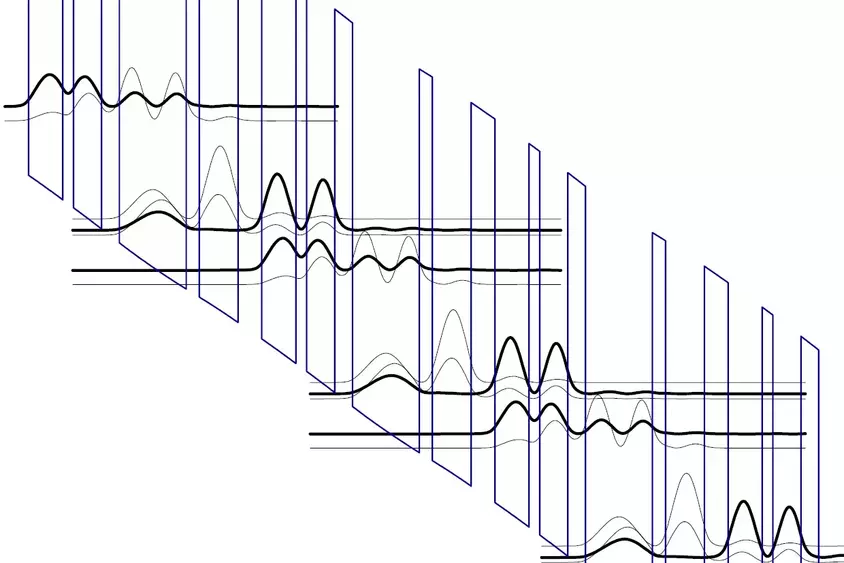Terahertz quantum-cascade lasers
The excellent state of semiconductor science and technology allows for the development and application of sophisticated devices such as quantum-cascade lasers (QCLs). These devices rely on the comprehensive understanding and the high-quality growth of complex planar heterostructures. For the terahertz spectral region, GaAs/(Al,Ga)As-based heterostructures are the material of choice. In contrast to conventional interband semiconductor lasers, QCLs are so-called intersubband emitters, since the lasing transition takes place within the conduction band rather than across the energy gap. In order to obtain population inversion between subbands of the conduction band, a rather complex semiconductor heterostructure with typically 6 to 20 layers with thicknesses in the range of a few to about 20 nanometers has to be realized, which is repeated about 100 times forming a semiconductor superlattice with a complex unit cell. The total thickness of the complete structure typically amounts to about 10 μm. The realization of such a structure requires both, a design strategy based on appropriate modeling and a highly accurate growth technique such as molecular beam epitaxy with a very good stability of the growth parameters over up to 25 hours. After growth, the wafers are processed using wet chemical or dry etching to form edge-emitting Fabry-Pérot ridge lasers. For single-mode operation, distributed-feedback lasers using lateral gratings of different order, two-section cavity lasers, or very short Fabry-Pérot cavities are realized. Typical dimensions of the laser ridges are widths of 15 to 200 μm and lengths of 0.5 to 10.0 mm.

Our activities in the field of THz QCLs cover the design, growth, fabrication, and determination of the operating parameters of these lasers as well as their provision for spectroscopic applications. From 2014 to 2022, QCLs developed in our institute were used as local oscillators in the German REceivers for Astronomy at Terahertz frequencies (GREAT and upGREAT) on board the Stratospheric Observatory For Infrared Astronomy (SOFIA) for the detection of the fine-structure transition of interstellar neutral atomic oxygen (OI) at 4.7448 THz. Currently, the implementation of stabilized THz QCLs for future space missions based on passive cooling is of great interest. For fundamental research and industrial applications, high-resolution absorption spectroscopy based on fine-structure transitions in Al, N+, and O at 3.36, 3.92, and 4.75 THz, respectively, is of interest for the quantitative determination of the atom and ion densities in plasma processes. Recently, the Leibniz Institute for Plasma Science and Technology (INP) has developed an absorption spectrometer for the determination of the absolute density of oxygen atoms in a plasma, which is based on our QCLs. Furthermore, QCLs emitting in the atmospheric windows around 3.43, 4.32, and 4.92 THz allow for applications if the THz radiation has to be transmitted through air over a distance of up to 10 m.
QCLs for the THz spectral region are usually based on GaAs/(Al,Ga)As heterostructures with an Al content between 0.1 and 0.25. Since 2016, we have been able to realize GaAs/AlAs QCLs. Substituting AlAs for the (Al,Ga)As barriers leads to a larger energy separation between the subbands and finally to a reduction of the probability for leakage currents through parasitic states and the reabsorption of the laser radiation so that the wall plug efficiency can be increased. THz QCLs based on GaAs/AlAs heterostructures are now available for frequencies between 3.3 and 5.6 THz. For 3.5 and 4.75 THz, optimized lasers exhibit already wall plug efficiencies of larger than 0.002 and 0.001, respectively. Typical output powers of 1 mW correspond to electrical driving powers of less than 1 W so that the operation in a miniature mechanical cryocooler becomes feasible. Therefore, new paths have been opened toward various applications.